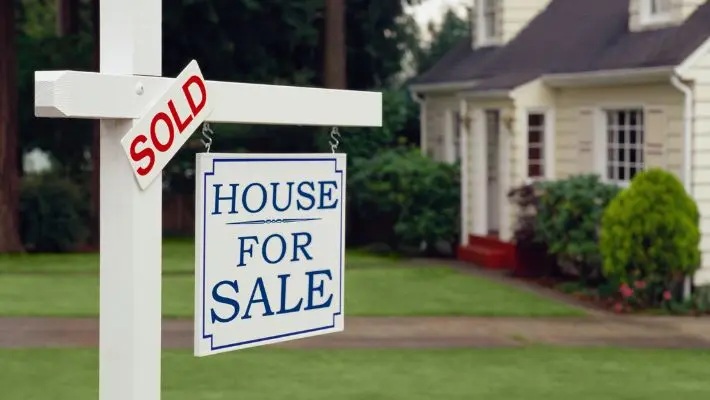
What is a Foreclosure?
Foreclosure can be a scary process for homeowners. Learn more about what it is, how it happens, and ways it can be prevented.
When a home buyer takes out a mortgage loan, there are terms and conditions that allow the mortgage lender to take ownership of the home in the event of missed payments. This process is known as foreclosure. Learn more about what foreclosure is, how it happens in the first place, how it works, and ways it can be prevented.
What is a Foreclosure?
A foreclosure is a legal process that occurs when a homeowner is no longer making payments on the mortgage loan they used to finance their home. Foreclosure allows the mortgage lender to take ownership of the property and sell it, allowing them to recover the amount the homeowner owes on their mortgage loan. The contractual nature of a mortgage loan allows the mortgage lender to use the home as collateral in the event of the homeowner failing to uphold their end of the loan terms and conditions.
How Does Foreclosure Happen in the First Place?
While foreclosure processes and laws vary by state, foreclosure begins when the first monthly mortgage payment is missed. The mortgage lender will notify the borrower they have missed their payment. If the borrower fails to pay for the second month, the mortgage lender will initiate efforts to demand payment. When a borrower misses their mortgage payments for at least 120 days, or three months, they are in the “pre-foreclosure” period. The mortgage lender can then initiate the foreclosure process.

By federal law, mortgage lenders are required to make reasonable attempts to contact the homeowner regarding missed payments. This also helps the mortgage lender make reasonable efforts to prevent foreclosure from occurring — especially since the foreclosure process is also cumbersome for the mortgage lender. Once the borrower has entered the foreclosure process, there are two paths they may face, depending on the state they’re located in: judicial foreclosure and non-judicial foreclosure.
Judicial foreclosure means the lender must go through the court system to prove the borrower is delinquent on payments and get authorization to foreclose on the property. If the courts rule the foreclosure as authorized, the local sheriff will then auction off the property. Alternatively, the bank may become the owner of the property and sell it in a more traditional manner. Both routes aim to help the mortgage lender recoup their losses.
Non-judicial foreclosure, in contrast, does not go through the court system and follows the more traditional path of selling the home, with the mortgage lender acting as the property owner. The two parties do not go to court unless one sues the other.
What Are the Impacts of Foreclosure for a Homeowner?
Foreclosure is a significant financial crisis with tremendous, rippling impacts to a homeowner. Once the first month’s mortgage loan payment has been missed, the borrower is considered to be in default, which is reported to credit bureaus. If the foreclosure process is fully initiated, the mortgage lender can evict the current homeowner and repossess the home.
Foreclosure also remains on a borrower’s credit report for anywhere from 3 to 7 years, impacting their credit score drastically, which hinders their ability to get approved for other loans and even their standing when applying to rent properties.
Can Anything Stop the Foreclosure Process Once It’s Started?

Ideally, a borrower shouldn’t wait until they’ve missed a mortgage loan payment to work with their lender to mitigate the possibility of foreclosure. By working with the mortgage lender before getting into dire straits — like missing a payment, or coming up on a time where the borrower will know they’re going to miss a payment — you’re also helping protect their interest.
Mortgage lenders need to protect their own financial interests, so they will work with you to prevent foreclosure.
If the foreclosure process is already underway, there are still a variety of options delinquent borrowers can pursue by working with their mortgage lender. Here are a few paths forward that delinquent borrowers can consider pursuing.
Mortgage Loan Modification
One option to avoid foreclosure is to request a mortgage loan modification, which changes the terms of the mortgage loan in order to make loan payments more affordable. Modifications can include lowering the interest rates or adjusting the life of the loan.
Short Sale
Another option to mitigate the foreclosure process is a short sale, which allows homeowners to sell the property for a price lower than the remaining balance on the mortgage loan. The funds are paid to the mortgage lender and the borrower is released from the outstanding debt.
Request Forbearance
Requesting forbearance allows borrowers to pause or lower their mortgage payments temporarily in agreement with the mortgage lender. This gives the borrower time to secure the funding they need to get back on track and make their mortgage payments. It’s important to note forbearance is temporary; if a borrower does not get back on their feet and resume payments, they are still at risk of foreclosure.
To avoid foreclosure in the first place, it’s important to purchase a home that aligns with your budget, financial standing, and that you can invest in over the long term. If you want to get deeper insights on finding a home that lines up with your finances, make sure you work with a professional real estate agent.
If you're a current owner looking to sell or a buyer on the hunt for a short sale, the best way to find an agent is through RealEstateAgents.com. Get started today and connect with the top real estate agents in your local market!






